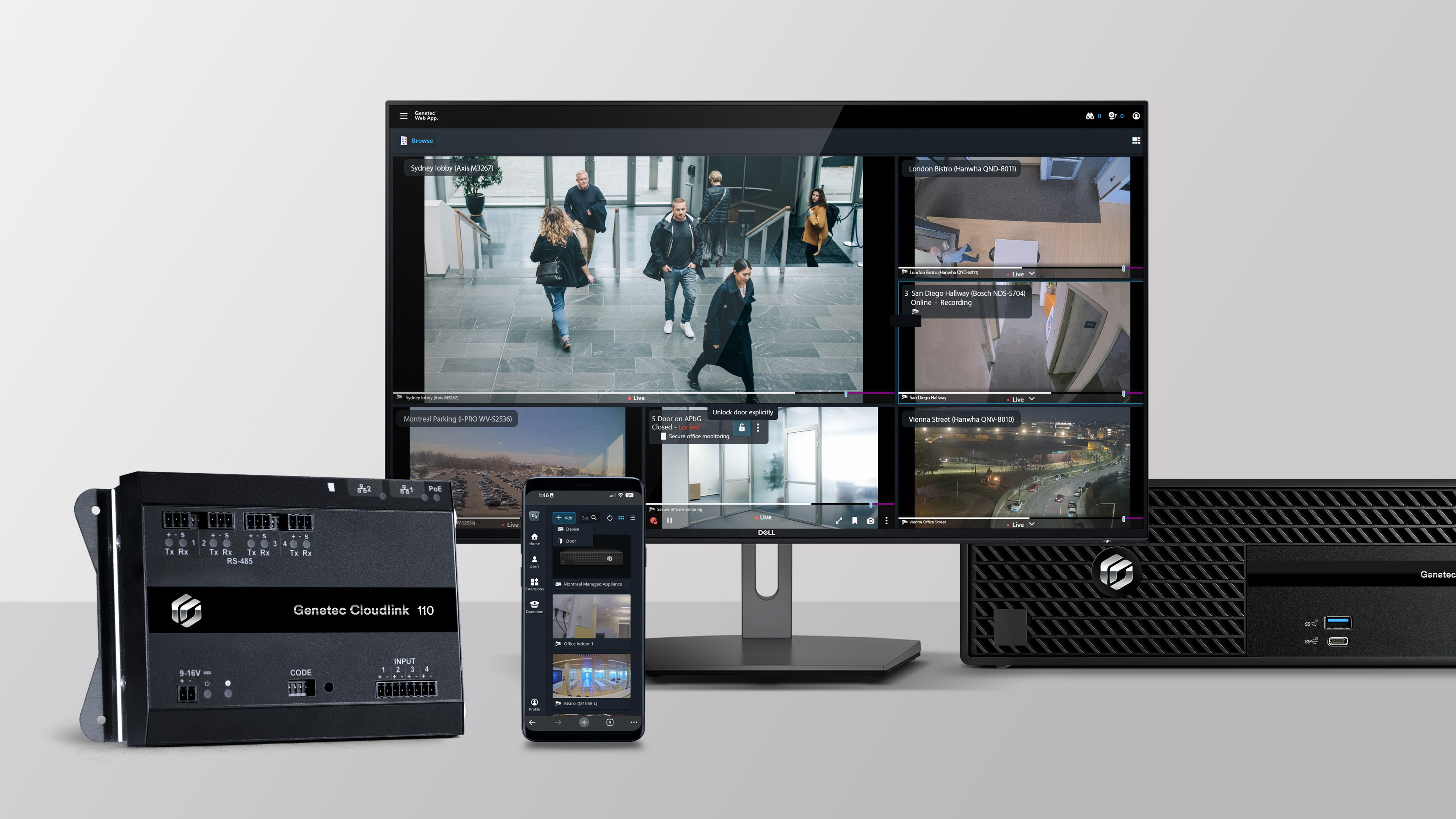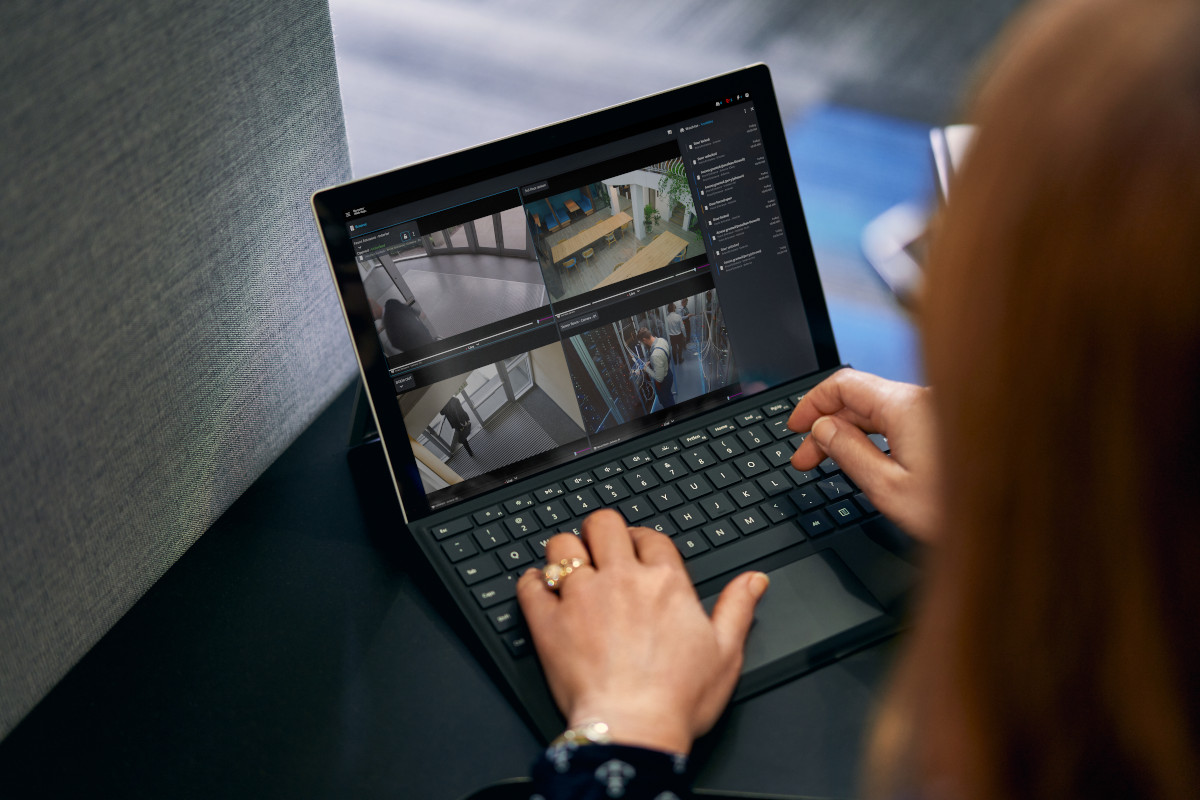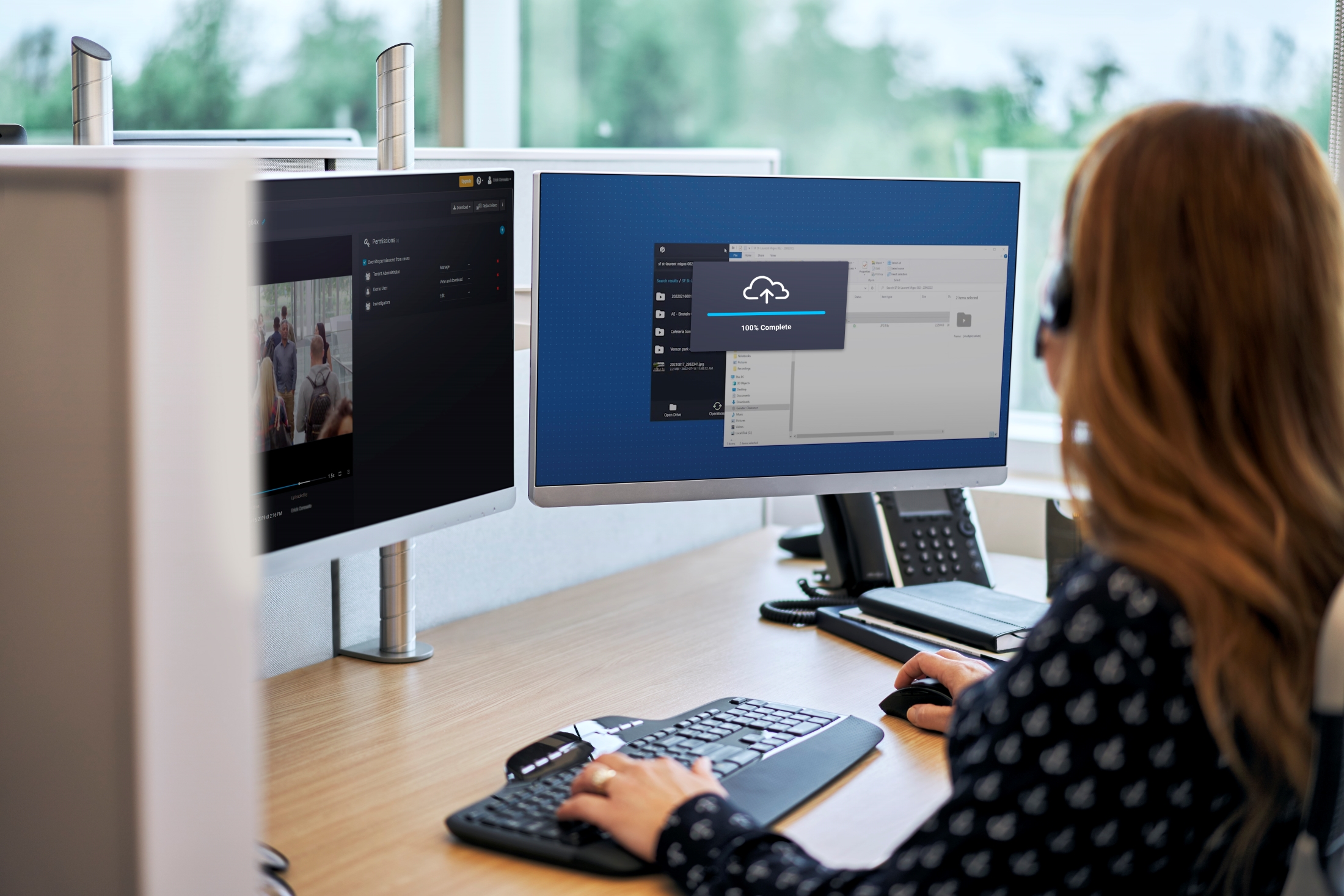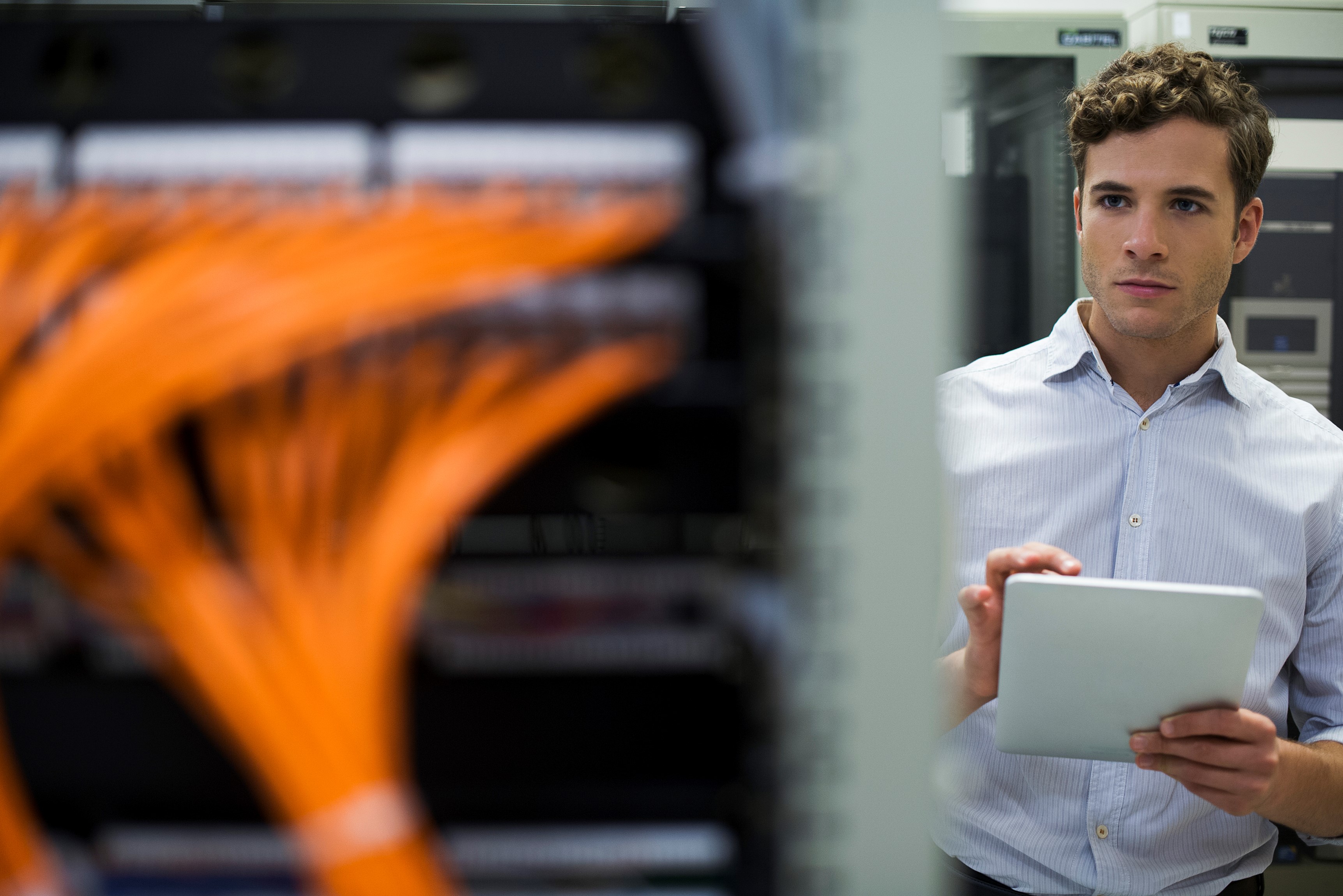Cloud or hybrid-cloud security; which one is right for you?
Learn about the differences and which deployment meets your organization's needs.

From 2022 to 2023, cloud adoption has increased by 20% according to respondents in the recent State of Physical Security Survey. And 60% of end users reported that they're moving to a hybrid-cloud deployment, blending on-premises and cloud solutions as needed.
As cloud-based physical security solutions become more popular, decision-makers are asking the following questions:
- What’s the difference between a full cloud versus a hybrid-cloud deployment?
- What deployment considerations do we need to make when deciding between a full cloud or a hybrid-cloud setup?
- Which cloud approach will be best for our physical security objectives now and in the future?
Find out how full cloud and hybrid-cloud security deployments compare. And how cloud-managed appliances can help ease the transition to the cloud while delivering added benefits.
EBOOK
Full cloud deployment
A full cloud deployment means your video, access control data, and sensor information are all stored and managed in the cloud by default. At any time, you can access centralized cloud software to oversee all your security tasks and manage your devices. These include direct-to-cloud cameras, controllers, and various other devices.
In a full cloud deployment, there’s no on-premises infrastructure to manage or maintain and you get all the latest cybersecurity updates pushed to your devices from the cloud.
Organizations that benefit from a full cloud deployment
- Have a cloud-first policy
- Prioritize enhancing cybersecurity
- Want the convenience of instant updates and access to the latest innovations
- Need to back up their recordings off-site
- Are seeking low to no hardware footprint across their deployments
- Don’t want to maintain hardware or don’t have the resources to do it
![]()
Hybrid-cloud deployment
A hybrid cloud deployment gives you the freedom to choose exactly how you want to set up each system and site. That means you can have one site that’s fully on-premises, another site that’s full cloud, and another site that’s connected to the cloud with edge devices or cloud-managed appliances. Video and data from your cameras, door readers and controllers, or other devices, whether at the edge, on-premises, or in the cloud, come back into a centralized cloud software that you can access from anywhere.
In a hybrid deployment, cloud-managed appliances can become a critical component in your transition to the cloud. They help you convert older security systems to the cloud while providing additional on-site storage and processing, reduced maintenance, and stronger cybersecurity.
You might also have some of your own on-premises server infrastructure that you will want to bring into your hybrid-cloud deployment. Though you’ll still be responsible for managing and maintaining that hardware, your cloud solution and cloud-managed appliances will allow you to strengthen cybersecurity best practices and streamline maintenance across your sites.
Organizations that benefit from a hybrid cloud deployment:
- Don’t have the infrastructure to support a full cloud deployment
- Want to move to the cloud and still use existing investments
- Have limited internet connection or smaller data plans at some sites
- Want to enhance cybersecurity across different types of sites
- Are searching for more deployment flexibility and agility
- Have requirements for added storage and processing at the edge
- Need to keep on-premises infrastructure but still want centralized cloud management
What’s the biggest difference between a cloud and hybrid-cloud deployment?
One of the main differences between a full cloud and hybrid-cloud physical security deployment is whether you have any on-premises systems or infrastructure that you need to keep.
For example, if you’re running applications that aren’t cloud-based yet, you have sites where policies still dictate the use of on-premises infrastructure, or you have site limitations such as spotty internet connectivity and low bandwidth.
The choice to keep on-premises installations often goes beyond site requirements. In some cases, an organization with many sites may be ready to fully transition to the cloud, but they want to do it slowly, at their own pace. In this case, a hybrid-cloud deployment would allow them to move their on-premises systems over to the cloud one by one while maintaining centralized control and management of all their sites from a single solution.
Another scenario is if your organization has made significant investments in infrastructure hardware, edge devices, and IIoT sensors that aren’t cloud-ready. You might be interested in moving to a more robust and sophisticated cloud solution, but it’s too complicated or costly to divest all existing hardware assets. Using cloud-managed appliances, you can easily transition these installations to the cloud while keeping your existing investments in place.
Checklist
How can cloud-managed appliances help you transition to the cloud?
In a hybrid-cloud security setup, cloud-managed appliances can help you modernize an older access control or video surveillance system by facilitating a connection to the cloud. You can easily swap out older on-premises servers and bridge your site to your central security operations.
This allows you to keep existing cameras, access control readers, and other sensors, and streamline system maintenance through cloud management using an intuitive software. You’ll also get access to modern cloud-native video and access control services, which are packed with enterprise-grade features that enhance your physical security operations.
APPLIANCE FINDER
The benefits of cloud-managed appliances
By connecting your video and access control systems to the cloud, you’re able to compile more data from the edge. You can gain new insights into your operations and use that intelligence to improve processes and achieve new business objectives. Ultimately, this is a step towards getting more from your physical security investments.

Another big perk of deploying these cloud-managed appliances? They can help strengthen your cybersecurity posture. Having centralized connectivity to all your sites allows you to monitor system health and ensure your systems are hardened and always running at peak performance.
Updates and fixes are pushed from the cloud so you’ll know your device is always secure. These updates also ensure that you get continuous access to innovation as it comes to market. Furthermore, since the vendor handles all the updates and ensures devices are hardened by default, there’s less maintenance for your team to worry about.
Lastly, these modern cloud appliances offer built-in redundancy and bandwidth optimization features. So whether you’re dealing with bandwidth restrictions or other site constraints, you can configure the device to optimize your installation and meet requirements.
Here’s one last point to consider: If you decide to go full cloud today, you’ll always have the option to add cloud-managed appliances later and convert to a hybrid-cloud deployment. These devices can help you add layers of redundancy, storage, and processing power at the edge, where and when you need it. The devices are also plug-and-play, so installation is a breeze. And again, since they’re managed in the cloud, everything from updates and maintenance is simplified.
Who can benefit from cloud-managed appliances? Organizations that want to:
- Increase deployment flexibility and agility
- Modernize deployments while keeping existing investments
- Manage limited bandwidth resources
- Preserve existing edge infrastructures and transition at their own speed
- Push storage and processing activities to the edge, using containerized workloads and custom Linux operating systems, etc.
- Lighten the network load with cloud and edge retention options
- Leverage physical security data that resides at the edge
When to choose hybrid-cloud or cloud for your deployment
Understanding the differences between full cloud or hybrid-cloud deployments can help you make an informed choice—along with defining what you’d like to achieve in your physical security roadmap. Below are a few outcome-based scenarios that show when a hybrid-cloud or a full cloud security solution might be a better choice for your organization.
Scenario 1
We’d like to connect all of our older, standalone video and access control systems and centralize how we manage our physical security enterprise-wide. However, our cameras and access control readers are not cloud-ready, and some sites have server infrastructure that must stay on-premises.

Why hybrid-cloud works: You can add cloud-managed appliances to the older sites and connect them all within a centralized cloud solution. You can also federate on-premises systems back into that cloud solution for a fully unified security management experience.
Scenario 2
We have older access control and video surveillance systems that are nearing end of life. We’re looking for a unified security solution, but we no longer want to manage, maintain, or procure any on-premises infrastructure hardware. There’s no regulatory compliances or on-site storage requirements holding us back from that goal. We’re ready to move everything into the cloud and have the necessary bandwidth and budget to transition fully into the cloud.

Why full cloud works: You can invest in direct-to-cloud cameras and access controllers as well as a cloud solution that includes cloud-native video surveillance and access control software. All data and video from your direct-to-cloud devices will connect into a centralized and unified cloud solution. With a full cloud setup, you’re outsourcing all the storage, maintenance, updates, and cybersecurity to the vendor. This gives you more time to focus on enhancing security across your organization and use data to generate operational insights.
Scenario 3
We have older cameras and intrusion panels at a few remote sites with low bandwidth. We need to upgrade the video surveillance system and add access control. We also don’t have a lot of room for server infrastructure and it’s too costly and time-consuming to send people on-site every time we have a technical issue. We’d like to find a way to optimize resource utilization and keep existing hardware, so we can maximize our budget for the video and access control upgrade.

Why hybrid-cloud works: You can start adding small-factor cloud-managed appliances to your sites that can run video and access control workloads while keeping existing investments in place. All your video and data from various systems and sites will connect back to a single, easy cloud solution. This allows you to centrally manage and maintain all your edge devices so you won’t need to send workers on-site to handle updates or troubleshoot system issues.
Cloud terminology in the physical security industry
Because there can be some confusion when reading about or researching cloud technology, we asked our experts to list and describe some popular terminology (see below). They also put together a thorough checklist that you and your team can use to help select a cloud-based physical security solution that will stand the test of time.
